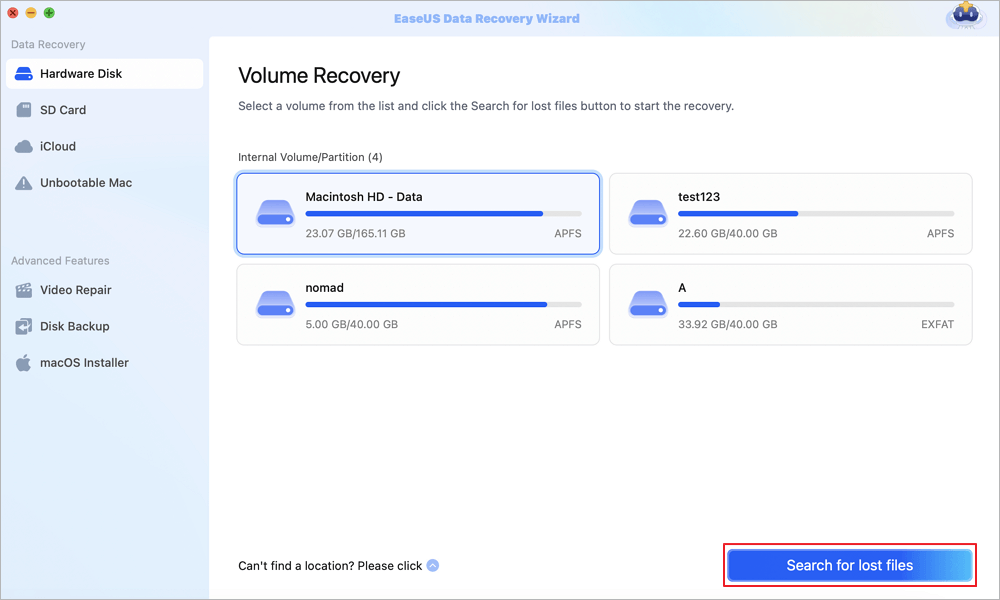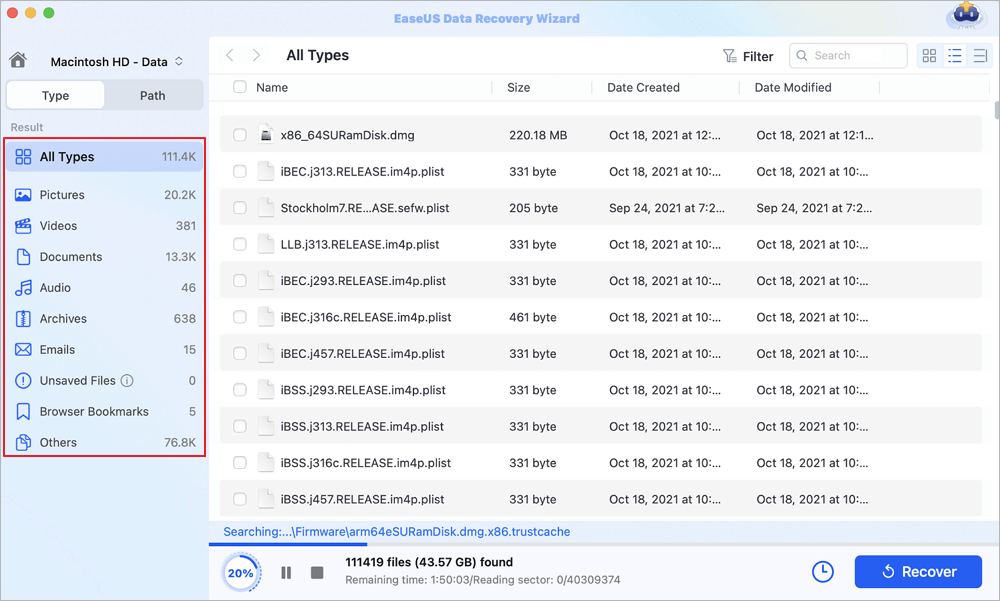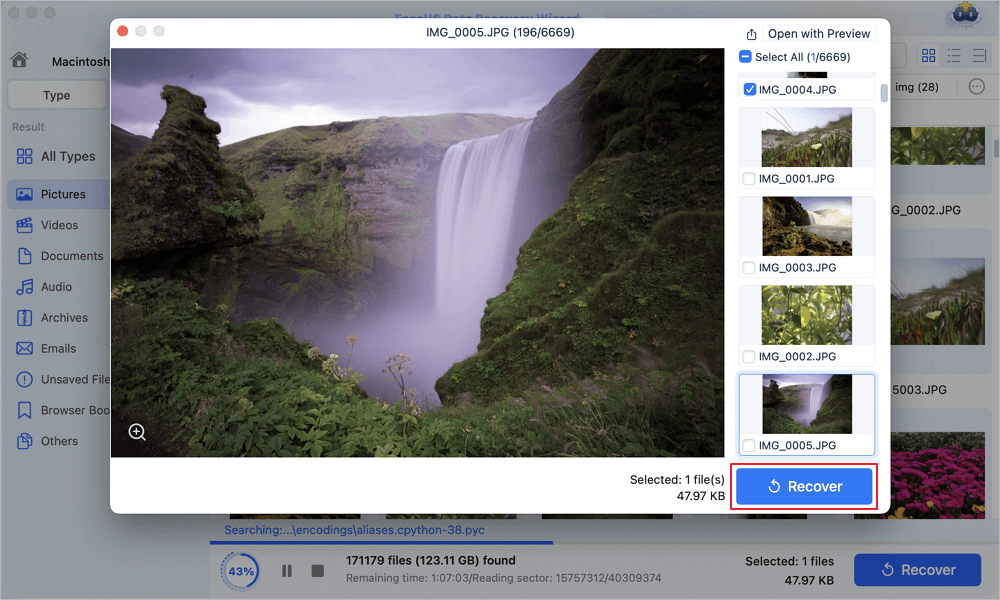Cannot update and install latest macOS Sierra 10.12.1 in your Mac computer? Don't worry. Here in this article, we'll offer you effective methods to assist you fixing complex macOS Sierra update error such as fail to download or update stuck issue in Mac. You can simply follow below offered steps and solutions to fix this issue with ease now.
Now let's follow to update and install macOS Sierra 10.12.1 in Mac computer without any obstacles or losing any data now.
Step 1. Backup important Mac data in advance
In order to avoid unexpected data loss error or problems while installing new macOS Sierra in Mac, it's highly necessary to create data backups in advance.
You may directly apply Time Machine as a free tool to full backup your important Mac data with simple clicks.
If you don't have a backups and lost some data while installing new macOS Sierra update, you can try professional Mac data recovery software to get all lost data back.
Step 2. Fix macOS Sierra fail to download or "An error has occurred" issue
If your Mac shows a error message that "An error has occurred" or "Failed to Download" while you are trying to downloading a new update for macOS Sierra. And this has become a common issue that many users have to face while upgrading Mac to a new operating system. And you may follow below tips to fix this issue:
- Open Launchpad > Delete "Install macOS Sierra" file with a question mark on it;
Reboot Mac and retry to download a new macOS Sierra update 10.12.1:
- Click Apple Menu > Select App Store > Click Update next to macOS Sierra in the Update section.
Then the new update of macOS Sierra 10.12.1 will be downloaded automatically for you. Then you can try to install the latest macOS update in Mac computer now. If you get stuck or frozen while installing macOS Sierra 10.12.1, you can jump to Step 3 to find solution.
Step 3. Solve macOS Sierra update stuck issue or install freeze error
If your Mac computer gets stuck or freezes up while installing macOS Sierra 10.12.1, don't worry. You may try below tips to fix this issue with ease now:
- Disable or uninstall any Anti-virus software on your Mac;
- Ensure Mac computer has a proper and reliable internet connection;
- Install macOS Sierra in Safe Mode:
Hold Power till Mac shuts down > Turn Mac on and hold Shift key > Release Shift when Apple logo appears > Then Mac shall be booted into the Safe Mode.
Step 4. Download and install macOS Sierra 10.12.1 update
Now you can continue to download and install macOS Sierra 10.12.1 in Mac.
How? You can try to get a update in Mac by the follow clicks:
Click Apple Menu > Select App Store > Click Update next to macOS Sierra in the Update section.
Then you can run macOS Sierra 10.12.1 update and follow the on-screen instruction to install the new update in Mac computer with ease now.
And don't worry about losing any data if you have created backups in Step 1. If you don't have any backups and lose data while installing macOS Sierra 10.12.1, don't worry. Next we'll offer you effective tip to restore lost data due to macOS Sierra 10.12.1 update.
Tip: Restore lost data after macOS Sierra 10.12.1 update
Here we'd like to recommend you try professional Mac data recovery software - EaseUS Data Recovery Wizard for Mac which fully supports all macOS systems including the newest macOS Sierra 10.12.1, El Capitan, Yosemite etc. It allows you to restore all lost data due to macOS update or other reasons within 3 steps.
Just apply this software and follow this tutorial to restore files on Mac now.
Note: You can create a backup by clicking the "Disk Backup" on the left first. When the disk is damaged or the data on the disk is accidentally deleted or lost, you can get the data back from the backup image.
Step 1. Select the location
Select the disk where you lost data after updating to macOS Sonoma/Ventura/Monterey/Big Sur. Then, click "Search for lost files".

Step 2. Find lost data after the scan
EaseUS Data Recovery Wizard for Mac will immediately scan your selected disk volume and display the scanning results on the left pane. Use the file type and file path to find wanted data on Mac.

Step 3. Recover data after macOS update
Select the target files that were unknowingly lost during or after the update and click the "Recover" button to get them all back.

Was This Page Helpful?
Updated by Tracy King
Tracy became a member of the EaseUS content team in 2013. Being a technical writer for over 10 years, she is enthusiastic about sharing tips to assist readers in resolving complex issues in disk management, file transfer, PC & Mac performance optimization, etc., like an expert.
Related Articles
-
Disable Keylogger in Windows 11 to Stop Microsoft from Collecting Your Data
![author icon]() Daisy/2024-01-11
Daisy/2024-01-11 -
[6 Quick Fixed] Computer Turns On But No Signal to Monitor
![author icon]() Larissa/2024-01-11
Larissa/2024-01-11 -
How Do I Format USB Drive on Linux? Linux Beginners in 2024
![author icon]() Tracy King/2024-01-11
Tracy King/2024-01-11 -
How to Run First Aid from Recovery Mac | Detailed Tutorial for macOS
![author icon]() Dany/2024-01-11
Dany/2024-01-11
EaseUS Data Recovery Services
EaseUS data recovery experts have uneaqualed expertise to repair disks/systems and salvage data from all devices like RAID, HDD, SSD, USB, etc.
